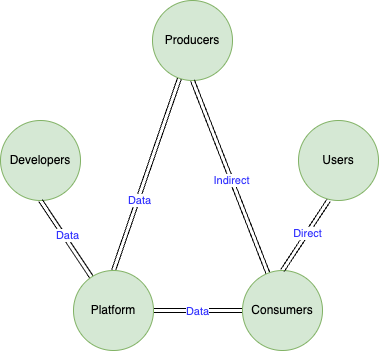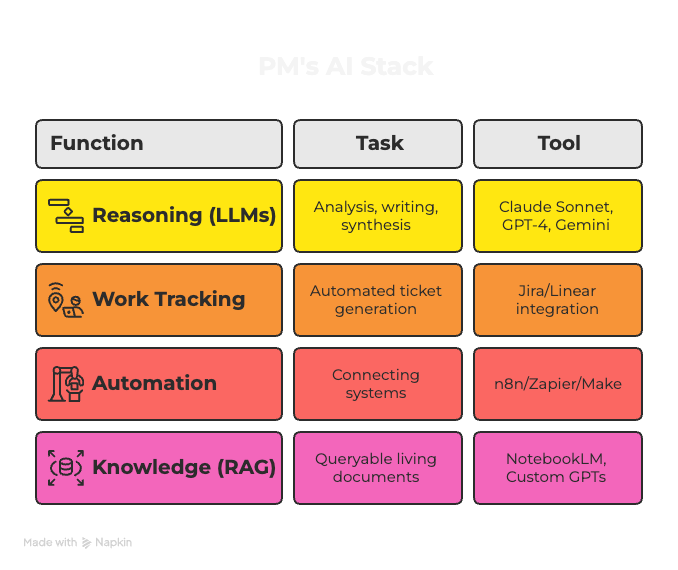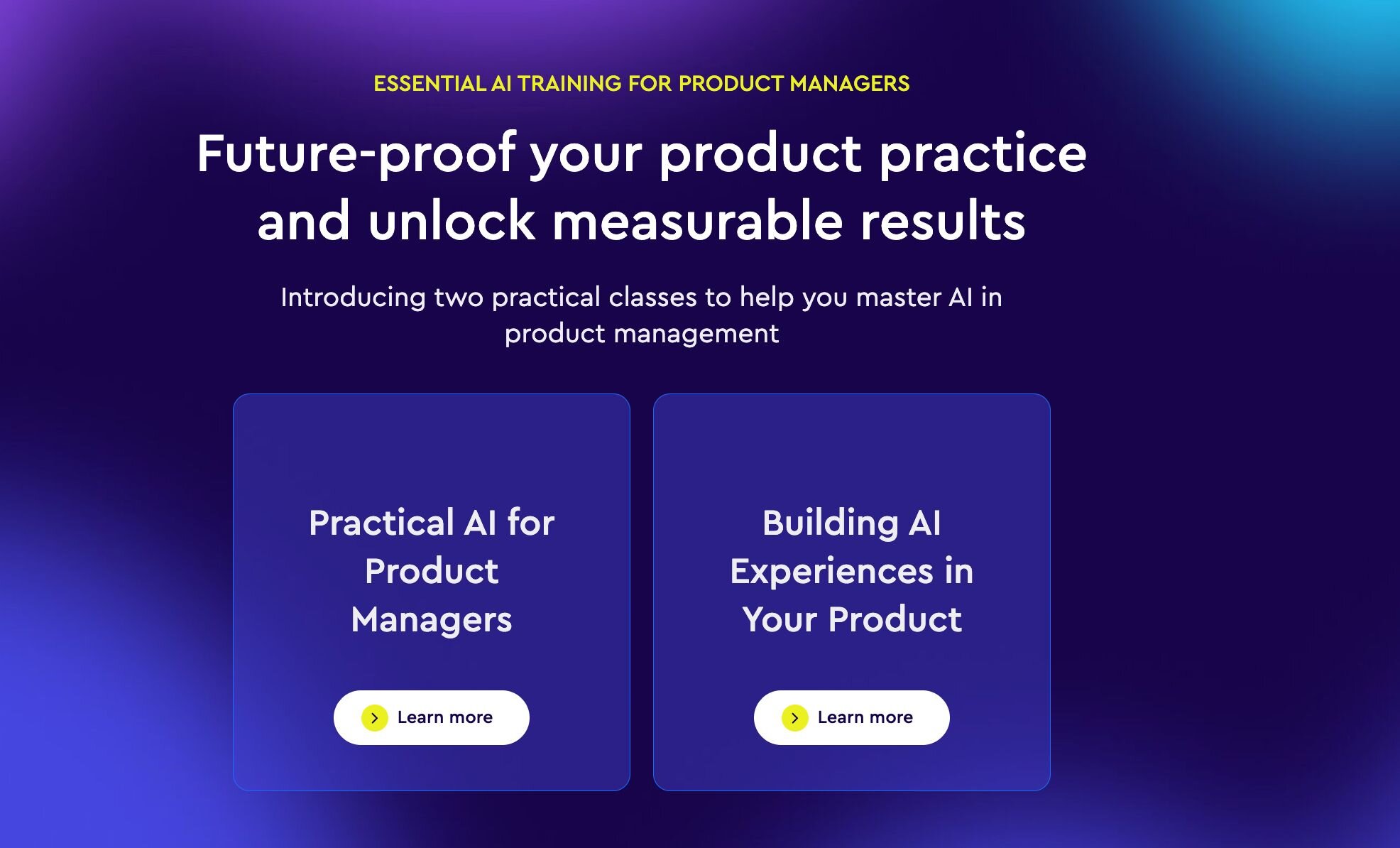Imagine this: You’ve created a popular AI product. Users love it. Growth is steady. And then one day, your CEO says: “How do we make this a platform play?” Sound familiar? This is a conversation playing out in product teams everywhere today in 2024 and will be the theme for 2025. And for good reason – the most valuable businesses today aren’t products, they’re platforms. But here’s the challenge: Everybody talks about platform thinking but very few product managers have had a real framework to switch that way of thinking, particularly in the Generative AI era. Let's change that.
The new playbook: From product to platform
Do you recall when Perplexity was just another AI search engine? It's now evolving into an incredibly robust platform that allows developers to create custom search experiences powered by Perplexity's API, publishers to aggregate specialized knowledge bases, and users to curate collections and the newest addition-perplexity shopping. This evolution is a quintessential example of the modern platform evolution.
That pivot happens when you stop asking “How do we capture all the value?” and instead ask, "How can we empower others to add value?”. Much like how Figma evolved from a design tool to a thriving ecosystem of plugins and creators, the shift happens when you stop thinking about building everything and start enabling others to build with you. Read more.

Figure 1. Platform evolution pathway
The three building blocks every Product Manager needs to master
As a product manager who has launched and scaled AI-powered platforms, there are three essential elements of the platform. Let’s distil these into actionable pieces you can use:
1. The value unit
Consider this to be the atomic unit of exchange for your platform. For Perplexity, search queries, and AI-based answers. For your platform, consider: “What is the smallest unit that could be considered a value that would pass from participant to participant?”
Get it down on paper: Summarize your value unit in one sentence. If not, it isn’t clear enough.
2. The value creation mechanism
This is where many platforms fail. You must make it incredibly easy for the two sides to create and capture value. Perplexity accomplishes this expertly: Developers receive strong search functions without having to train their own models, while users get access to highly nuanced and specific search throughout diverse areas.
3. The platform infrastructure
This is where your AI capabilities come heavily into play. With every interaction, the platform gets better, bringing network effects creating exponential value to the overall ecosystem. Your infrastructure needs to:
- Match intelligently (whether that’s connecting users to the dedicated search experiences that are most relevant for them)
- Learn from interactions (then, get better at recommending over time)
The magic of Perplexity's platform is how its learning loops work in a self-reinforcing way. Every user query improves search precision, and curated collections enhance context for richer interactions. If developers make domain-specific search experiences, their expertise goes back into the core system.
Practical framework for Product Managers for 2024 and beyond
Let’s break this down to be super actionable. Here’s your how-to guide, in six steps:
Step 1: What do you mean by the unit of value?
Start by answering these key questions:
- What are users exchanging on your site?
- Can you quantify this exchange?
- What user behaviors signal platform potential?
- Does this exchange meaningfully get enhanced with Generative AI?
Step 2. Mapping participants
Create two columns:
- Producers: Who are the stakeholders that create value?
- Consumers: Who uses value?
For each group, list:
- Their core motivations
- Their biggest pain points
- How AI can help them
Step 3: Network effect design

Figure X. Flow of network effects
Draw your network loops:
- Direct Effects: More users on the platform will mean more value for all users.
- Indirect effects: Increase in producers will lead to increase in value for consumers
- Data effects: More use will lead to better data and better AI leading to More value for all
Step 4: Launch strategy
This is where AI gives you a unique advantage. Start with:
- Narrow focus (single use case, single vertical)
- First content generations (overcoming cold start issue)
- Incentives for early adopters (exclusive AI features, early access, etc.)
The launch of the platform: A new way of doing things
The classic chicken-and-egg problem takes on new dimensions in the AI era. As Lenny Rachitsky explores in his widely-read newsletter, successful platforms must solve this fundamental challenge: how to attract producers without consumers, and consumers without producers. However, in 2024, AI offers unique solutions to this age-old dilemma. Try following Perplexity’s approach for example:
- They launched with a wonderful single-player experience (search powered by AI)
- Social features added (shared collections, discussions)
- Developers API access
- Designed personalized experiences (domain-specific search)
And each step fed on the previous step producing more and more powerful network effects.
Tips for successfully executing
- Start small: Make sure there is a single clear value exchange
- Use AI wisely: Enable AI in places where network effects are still being realized
- Measure religiously: Track both sides of your marketplace
- Iterate: The first version will not be perfect and that is fine
Conclusion
Platform thinking in 2024 is not just limited to connecting the two sides of the marketplace, it is about enabling an ecosystem for AI and customer (or platform participants) to create compounding value together. Keep in mind: Every successful platform began as a product. Solve one problem well, and then scale — indiscriminately. Leverage AI as an enabler — not just as a feature — to enable network effects to create value for all participants.
Disclaimer: The views and opinions expressed in this article are those of the authors solely and do not reflect the official policy or position of any institution, employer, or organization with which the authors may be affiliated.







